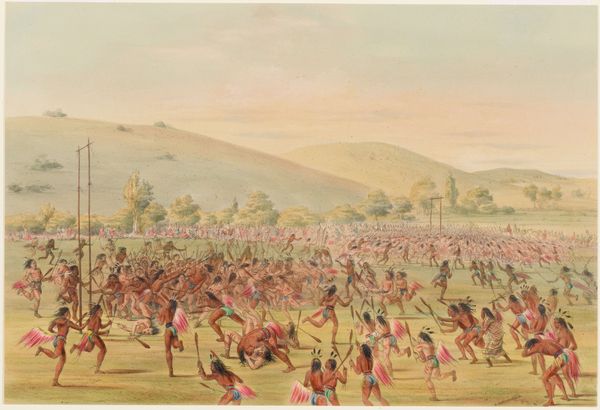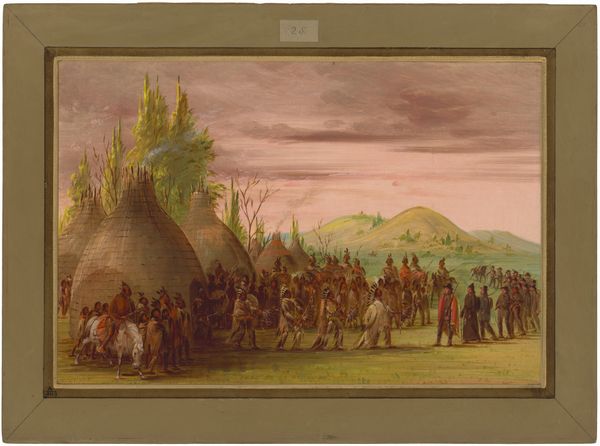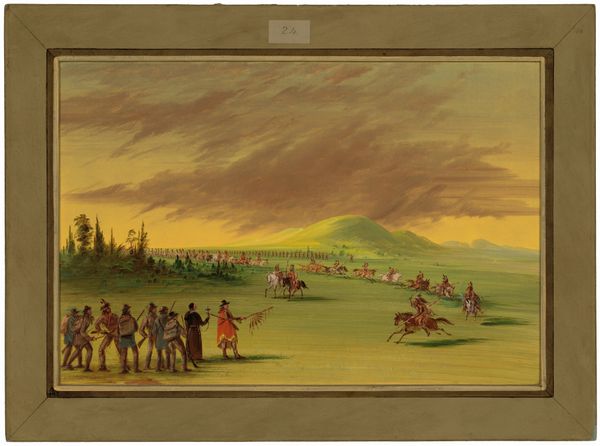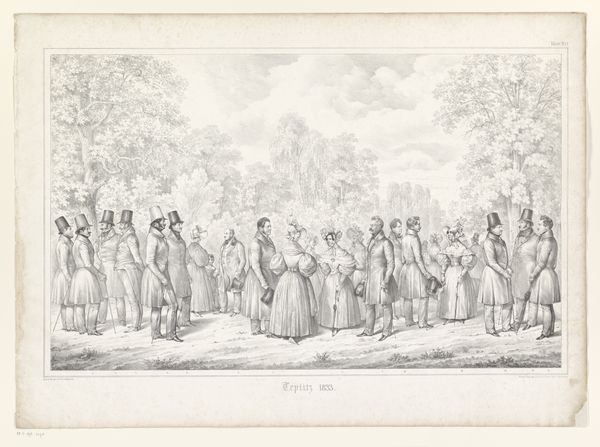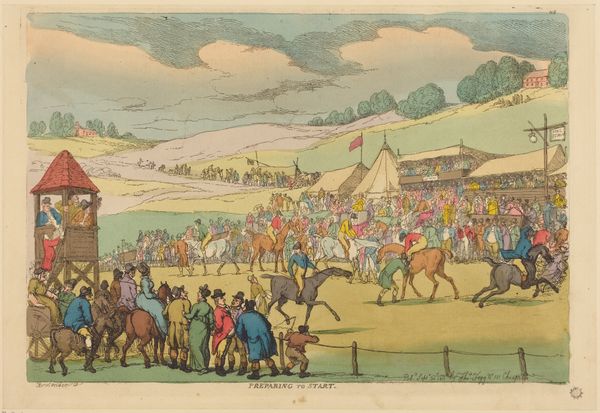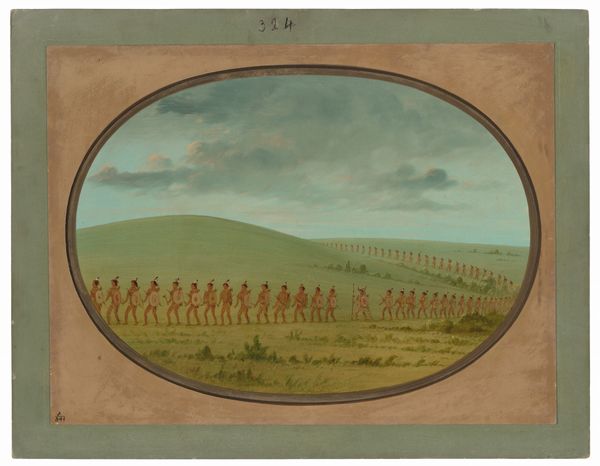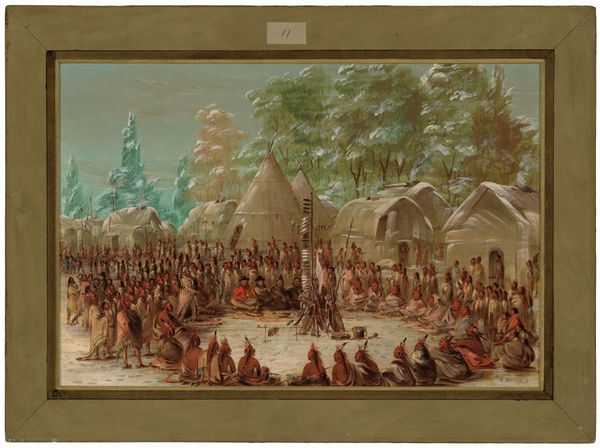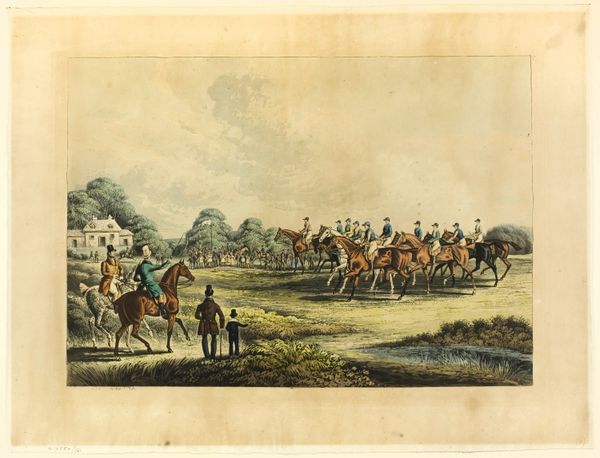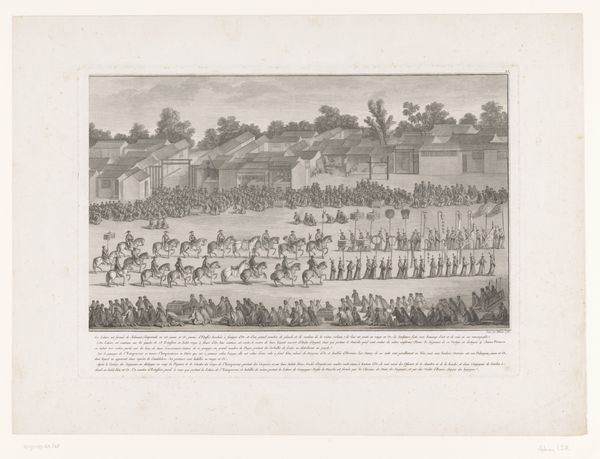
painting
#
narrative-art
#
painting
#
landscape
#
watercolor
Dimensions: 12 3/8 x 17 7/8 in. (31.43 x 45.4 cm) (image, sheet)
Copyright: Public Domain
Editor: George Catlin’s "Ball-Play Dance," created around 1844 and rendered in watercolor, captures a vibrant scene. It's busy, full of people, but the pale color palette gives it a somewhat removed feeling. What can you tell me about it? Curator: Looking at "Ball-Play Dance," I see a carefully constructed representation of Indigenous labor and leisure, filtered through the lens of 19th-century American expansion. Notice the painstaking detail in rendering the figures and their attire. This emphasis suggests an attempt to document and categorize a culture perceived as being on the brink of disappearance. Consider the social context: Catlin was creating this work during a period of intense westward expansion and displacement of Native American communities. Editor: So the way the dance is depicted—is it trying to preserve something that’s actively being destroyed? Curator: Precisely. Catlin profits materially from depicting Indigenous traditions, like this game, while at the same time the material conditions of Indigenous people were under attack through land dispossession, forced assimilation and broken treaties. How do the materials—watercolor and print—play into this dynamic of preservation and exploitation? Editor: That’s… heavy. I hadn't considered the materials themselves as playing a role in the exploitation. I was just focused on the vibrant scene and the sort of distant feeling. Curator: Think about the production of these prints, mass produced and consumed, further objectifying a culture and circulating an image tied to colonial narratives of progress. We must think about the labor that went into producing the pigment and paper, the transportation across the US, to then depict other exploited populations and lands. It's a system of consumption that has long affected marginalized communities and places. Editor: I never thought about how materials carry the weight of that story, too. It’s definitely given me a new perspective. Curator: It’s vital we start seeing how seemingly benign artistic choices were enmeshed in broader political and economic structures, then and now.
Comments
No comments
Be the first to comment and join the conversation on the ultimate creative platform.
